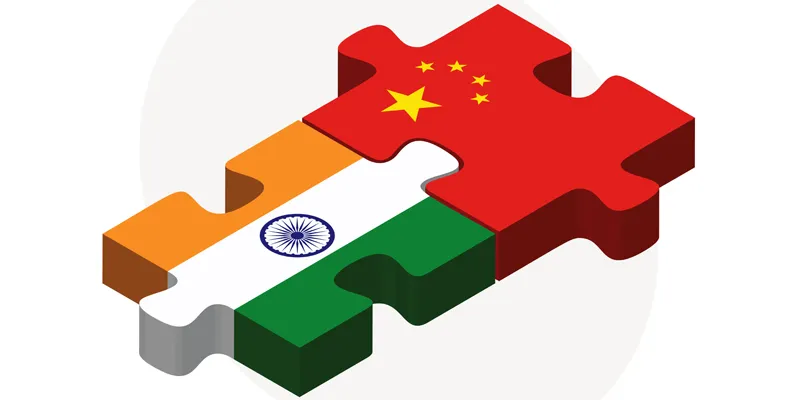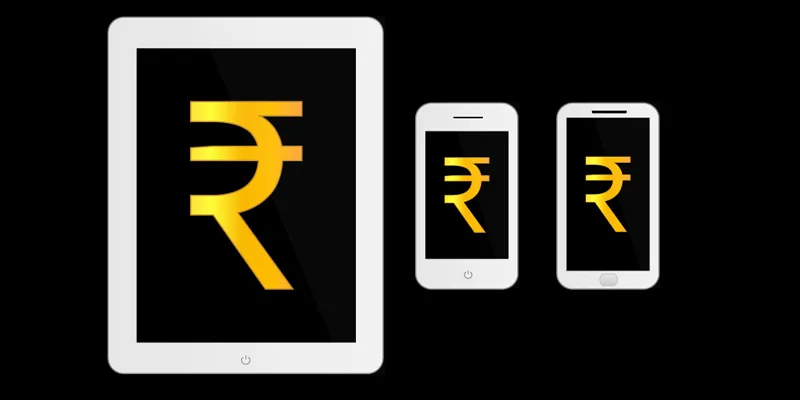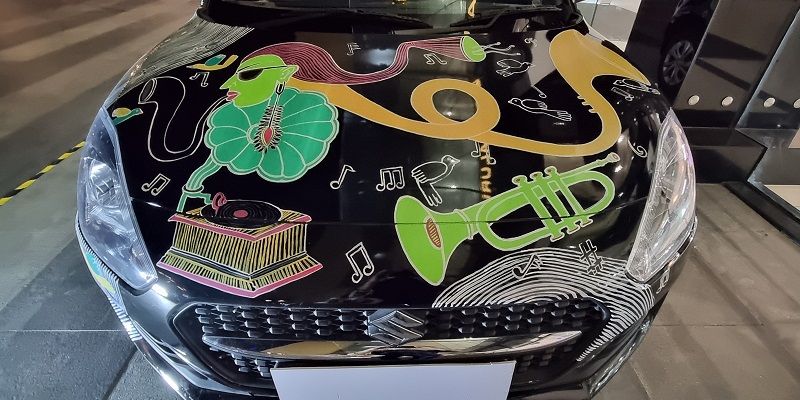Here's how international media covered India’s startups in 2016
The rise of digital media startups, ecosystem linkages, women entrepreneurship, and investment from East Asia featured prominently in international media coverage of India’s entrepreneur movement in 2016 -- along with the funding winter and challenges of demonetisation.

In this 2016 roundup, we continue our annual deep dive into how India’s entrepreneur ecosystem was featured in international media of three types: mainstream heavy-hitters, online portals, and NRI media. They are spread across all categories of traditional and digital media: ABC (Australia), BBC, Bloomberg, CNBC, CNN Money, e27, Fast Company, Financial Times, Forbes, Fortune, Huffington Post, India West, Nikkei, and Wall Street Journal (see also my earlier roundups of 2015 and 2014).
A good overview of startup India in 2016 was provided by Forbes, which highlighted eight pivotal moments such as government initiatives, FDI reforms, and the MakeMyTrip-Ibibo merger. “2016 proved to be the year for consolidation and transition, where entrepreneurial mindset metamorphosed from a gold rush-like mentality into an ecosystem where preference is being given to quality over quantity,” according to the report.
The ASSOCHAM study of India’s startup base being third in the world was extensively covered in international media including Bloomberg. The US has more than 47,000 tech startups and the UK has over 4,500; India has 4,200 (tracked up to 2015). Bengaluru is host to 26 per cent of domestic tech startups, followed by Delhi-NCR (23 per cent), Mumbai (17 per cent) Hyderabad (eight per cent), and Chennai and Pune (six per cent each).
- Digital media startups
The rise of mobile and internet in India has spurred a new wave of digital startups curating and covering news on social media and mobile apps. Media review site Journalism.co.uk had an in-depth piece on how The Quint was formed by Ritu Kapur and her husband, Raghav Bahl (also founders of Network18, acquired by Reliance Industries). Indian news startups are prioritising mobile-optimised websites, according to research by the Reuters Institute for the Study of Journalism (RISJ).
Digital native brands such as BuzzFeed, Quartz, and The Huffington Post also have an India presence. Many Western media brands are forming partnerships with Indian media players, according to Nieman Lab. The Quint has a partnership with Bloomberg called BloombergQuint.
Columbia Journalism Review also covered Indian media startups such as ScoopWhoop, FirstPost (owned by Network18), Scroll.in, NewsLaundry, The Wire, The News Minute, What’s The Deal News, The Better India, CGNet Swara, and Youth Ki Awaaz. Kalaari Capital has invested in POPxo and YourStory.
The three waves of Indian media change include the post-colonial press, corporate media, and digital players. The internet in India is growing at a rate of 40 percent year-over-year, when the rest of the world is tapering off at around nine per cent growth.
TV host Arnab Goswami’s move to launch his own media startup was also covered by CNN; “the nation wants to know” what his next move is, the report joked.

- Startup ecosystem: co-working spaces, incubators
New ecosystem developments such as the rise of incubator T-Hub in Telangana were covered by India West. Apple CEO Tim Cook launched its facility in Hyderabad; Uber and Amazon also have campuses in Hyderabad. Nearly 200 companies are enrolled at T-Hub’s 70,000-square foot space, reportedly the largest incubator in the world; the overall target is 5,000 companies, with a Silicon Valley branch as well.
The Associated Press had an article on the rise of co-working spaces in India, such as Innov8 and Social. Co-working spaces are well-suited to the millennial personality of seeking meaning, creativity, inspiration, and connection in work. In a related article, the BBC covered the Construkt Startup Hostel.
The services of Bhive Workspace, Investopad, and NASSCOM Startup Warehouse programme were covered by Nikkei. “The pursuit of promising startups in the country is likely to accelerate further,” according to the report, powered by such ecosystem support.
- Women entrepreneurs
The struggles and achievements of women entrepreneurs in India were also covered by CNBC. India’s startup sector “has a poor record when it comes to gender diversity.” Investors are stepping in to stem this gap, such as Ankita Vashistha, CEO of Saha Fund which invested in Kaaryah; other organisations in this space are Catalyst for Women Entrepreneurs.
The Daily Mail (UK) covered the Startup India provisions to promote entrepreneurship among SC/ST and women entrepreneurs via low-interest loans, tax benefits, and capacity building workshops. Singapore-based e27 also covered the women founders from India who pitched at the Female Foundry programme's demo day in December 2016.
The Gates Foundation is trying to help provide more phones and financial services to women in India and other emerging economies, according to a Wall Street Journal post. More than a billion women in developing countries do not have access to cellphones. Only around 30 percent of internet users in India are female, according to IAMAI estimates.
Startups such as JobsForHer (founded by Neha Bagaria) are helping women get into – and stay in – the workforce, according to a Forbes article. Around 50 per cent of all working women reportedly drop out of the workforce in India after just three years, as per IMF figures.
- Notable startups
In addition to the usual heavyweight suspects, startups in India covered by international media include Kulture Shop (BBC), ShopClues (Wall Street Journal), Dekkho (e27), Mokshshil.com (Huffington Post), That’s Personal (Bloomberg), Byju’s (CNBC), Unocoin (Fortune), MapMyGenome (Financial Times), Team Indus (Forbes), m-Indicator (CNN Money), Intelehealth (CNN), LilyApp (Huffington Post), UpGrad, GOQii, and Unocoin (Bloomberg Quint). The Australian Broadcasting Corporation covered the rise of luxury market firms in India, such as luxury malls and resorts.
Startups to watch, according to a Forbes report, are FluxGen Engineering Technologies (IoT), Capital Float (fintech), and ToTSmart Education (edutech). On the creative front, BloombergQuint covered ‘one of India's first musical startups, True School of Music.’ It offers a range of classroom and online training services for vocals, musical instruments, live performances, and production.
Sectors such as food delivery were covered by the Financial Times, e-commerce by The Economist, and mobile commerce by India West. In addition to IT, energy could be a booming entrepreneurial segment in India – such as solar energy, according to CNN, with players in this space such as renewable energy consultancy Bridge to India.

- Global players in India
A number of global firms are launching accelerators in India to form co-creation partnerships with Indian startups. These include Amazon Launchpad; it will offer online and offline products and subscription services, according to a Bloomberg feature. Acquisition and investment are other such cocreation strategies. For example, Ford invested $24 million in Indian car rental startup ZoomCar, as reported by the Wall Street Journal.
2016 was “perhaps the roughest ever for India’s technology companies,” with the entry and scaling up by foreign giants like Amazon and Uber. However, Indian startups are gearing up to face these challenges. “I will never underestimate these entrepreneurs’ ability to think their way out of a problem,” said Vani Kola, Founder of Kalaari Capital in a Bloomberg report. Her investments include SnapDeal, Via, Zivame, Guaranted, HolaChef and Myntra. “India can never be a repeat of the US or China,” she added.
Uber’s moves in India were covered by media such as Bloomberg; CEO Travis Kalanick launched the motorbike-sharing service UberMOTO in Hyderabad. India is Uber’s largest overseas market, and the firm aims to recruit a million drivers in India by 2018, more than any other country in which it operates.
Wal-Mart’s discussions with Flipkart were analysed in the Wall Street Journal. Wal-Mart has acquired US online discounter Jet.com for $3.3 billion, the largest-ever purchase of an e-commerce startup.
The number of foreign players entering India’s startup space continues to grow, and TechInAsia offered a guide to such companies on how to launch and operate in India. For example, for foreign nationals, the best route could be to start a private limited company; useful sites for talent are Naukri and HackerEarth.
- China, Korea, Japan
In addition to US players entering the India market, much media attention focussed on the rise of the East in India. Korean manufacturer Samsung has rolled out an Aadhaar-approved device, the Galaxy Tab Iris; OctoPOS is also entering this market, with Chinese components, according to a CNBC report. India will be a major market for Xiaomi, according to a Fast Company report. Mobile subscriptions in India are expected to hit 1.4 billion by 2021, according to the Ericsson Mobility Report 2016.

“After the Americans, Chinese, and the Japanese, venture capital investors from South Korea now seem to have found love for India,” according to a Quartz report. Bengaluru-based real estate portal NoBroker has raised $7 million in a round led by KTB Network. Softbank South Korea also invested in True Balance.
The market for motorcycles and electric rickshaws is drawing Japanese startups such as Terra Motors into India, according to Nikkei. India is the world's largest motorcycle market; 16 million were sold in fiscal 2014, up eight per cent from the previous year.
- Demonetisation
Many international media firms questioned India’s ‘scorched-earth campaign’ against cash instead of a phased layered approach. “Fewer than 10 percent of Indians have ever used any kind of non-cash payment instrument. Less than three percent of the value transacted in the year ending March 2014 used cards. Fewer than two percent of Indians had used a mobile phone to receive a payment, compared with over 60 percent of Kenyans,” according to a Bloomberg piece.
Perhaps the digital payment move should have been spearheaded by mobile operators as much as banks. Bloomberg also covered the opportunity for startups and digital players in this space, such as Paytm, MobiKwik, Freecharge; the India Stack players built on Aadhar; and microATM providers such as NovoPay.
“India's chaotic move to replace most of its cash could slam the brakes on its red-hot economy,” a CNN report explained. India overtook China as the world's fastest growing major economy in 2016, but may fall behind again due to adverse effects on sectors such as retail, construction, and real estate. These sectors rely heavily on cash and contribute about 30 percent of GDP, according to the Institute of International Finance.
Innovative responses to citizen woes, such as Canara Bank's bright blue ATM bus, were covered by CNN. Nearly half the country's 200,000 ATMs were reportedly out of cash in the aftermath of demonetisation.
In the public sphere, Aadhaar helps to distribute subsidies worth about $40 billion a year, as reported in The Economist. Aadhaar has already saved perhaps $5 billion in “leakages,” and is also a crucial part of the public digital infrastructure called ‘India Stack.’ This can help with financial inclusion and signing up for new services and employment.

- Venture funds
Venture funds of a number of investors and venture capital firms were covered in media such as Fortune and Bloomberg. For example, Accel raises $450 million for its India fund despite the startup slowdown. “With 870 million-plus mobile subscribers, 200 million smartphone users, 150 million social media users, and 60 million transacting users across different online segments, the market is ready for technology-led startups to build and scale their companies,” according to Accel, which has invested in Flipkart, TaxiFor Sure, BookMyShow, and FreshDesk.
SoftBank Group has also become a significant player in India's startup sector, but repeating the billion-dollar success it found in China is going to take time as well as money, according to Nikkei. Hike’s investments from SoftBank, Bharti Enterprises, and Tiger Global were covered by Forbes.
- Startup winter
“A growing number of Indian technology startups are facing pressure on their valuations in a tough private-funding environment, as investors whittle down the value of these companies amid a greater focus on profitability,” cautioned a report in Japan’s Nikkei. This is reflected in downgrading, downsizing, mergers, and shutdowns.
“After a sustained funding frenzy, investor enthusiasm for the country's tech startups has fallen sharply this year. Weaker firms are laying off employees and some have closed up shop altogether,” reported CNN. Still, the broader conditions are good and global investors “are on the hunt for the next Facebook or Amazon.” India may be going through “its first bubble," which is quite normal, and a “wake-up call” would be welcome. PepperTap shut down and Zomato laid off hundreds.
“Some investors in India's booming e-commerce industry are starting to curb their enthusiasm as valuations reach lofty levels. Morgan Stanley Institutional Fund Trust marked down 27 percent of its stake in Flipkart,” reported CNBC. Bloomberg also covered the layoffs and cost-cutting at Indian startups in the face of the increasingly tight funding scenario.
- Internet and smartphones
“India's richest man is rolling out a $20 billion mobile network that could bring lightning-fast internet to hundreds of millions of people,” reported CNN on the launch of Mukesh Ambani's new Reliance Jio service. Only one-fifth of adults in India have access to the Internet, and fast broadband is hard to find in rural areas. Other companies are stepping into this space, including Google and its free WiFi service at 100 railway stations.
Indian smartphone manufacturer Micromax was covered by CNN, as it took on Samsung, Huawei, Oppo, and Xiaomi. Micromax is the 10th-largest cellphone maker in the world, according to technology research firm Gartner.
- India abroad
On the global front, India’s startups are bringing back NRI talent and attracting foreign expats as well, the Wall Street Journal reported. Four Indian American innovators were among MIT’s 2016 ‘35 Innovators Under 35’ list; IndiaWest profiled some of them: Broad Institute’s Sonia Vallabh and InnAccel’s Jagdish Chaturvedi.
NRIs are also active in startup space, such as Harsh Joshi’s NimTree Organics, as reported by IndiaWest. It intends to bring to the US the agricultural benefits of the neem tree, long a staple to life in India.
- The road ahead
Entrepreneurship in India is “at an all-time high,” according to report in CNBC. India has more than 65 percent of the population below 35 years of age and record-breaking growth in smartphone adoption and data services. The government’s Niti Aayog (National Institution for Transforming India) also announced initiatives and funds for startup growth. The Global Entrepreneurship Network announced its official affiliation in India.

The rise of India’s startup ecosystem is opening up interesting new areas of research and adoption, especially in terms of regional diffusion and community strengths. Indian language internet strategies were covered by CNN, such as Hindi language support for Google Assistant.
“India is fast becoming a hotbed for technology-driven startups, many of which are led by entrepreneurs from a group called the Agarwals,” reported Nikkei, digging into India’s business communities: Bansals, Gargs, Goyals/Goels, Jindals, Mittals, Tayals, and Singhals. They constitute the founding teams of Flipkart, Snapdeal, Ola, Oyo, Urban Ladder, Zomato, NoBroker, and Droom (see also the related article ‘Entrepreneurial insights from Marwari businesses’ by Pawan Soni).
The startup mentality needs to spread from India’s cities to its farmers, according to a Huffington Post article. It is important to have agricultural enterprises that can “run with the head of a capitalist, the heart of a socialist and hands of a farmer.” They must focus on becoming sustainable businesses rather than charities, with support for skill development and market linkages.
India has the world’s biggest population of millennials, and “no battle for the online future of India is more intense than the one now being waged in e-commerce.” Shopping malls and chain stores account for only about one-tenth of total retail sales in India; combined sales of Flipkart, Snapdeal, and Amazon surpass those of the 10 largest offline retailers.
Notable comparisons are in China, such as Alibaba’s Alipay escrow services for e-payment and rural e-commerce via Taobao (see also my review of the book Alibaba: The House that Jack Ma Built by Duncan Clark). Despite 200 shut-downs, 2016 was actually a great year for India's startup ecosystem, according to an e27 year-end review; the hype is gone and it’s now down to a survival of the fittest.
In sum, the outlook remains promising despite the potholes and speed-bumps. “India's startups are making money - and waves,” summed up a Nikkei report. New ventures are coming up with “a dizzying array of innovative products and services unavailable even in advanced economies.”
We look forward to another exciting year of the entrepreneurship movement in India, and a wide range of analysis and storytelling by Indian media and its global counterparts!












